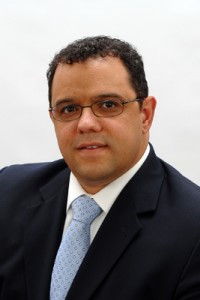Source – Huffington Post, April 12, 2012
IDEO.org’s Mission to Tackle Global Social Challenges Through Design for All
Jocelyn Wyatt is the Executive Director and Co-Lead of IDEO.org, the nonprofit organization started by Palo Alto, CA-based design consultancy IDEO to address poverty-related challenges through design and to encourage the use of a “human-centered approach” to innovation in the social sector. 
IDEO.org has worked with the Rockefeller Foundation, identifying potential funding strategies in support of youth employment initiatives around the world and Winrock International to help simplify and articulate a process for multiple-use water services in Nepal and Ethiopia. Recently they have worked with TED to design TEDx-In-A-Box for organizers of TEDx events who don’t have access to technology to host events in diverse locations around the world.
Previously, Wyatt led IDEO’s Social Innovation practice, which she expanded over the course of several years. Wyatt specializes in building social enterprises and advising businesses in the developing world, where she uses the market to effect social change. She has lent her perspective to social innovation projects with clients such as Acumen Fund, the Bill and Melinda Gates Foundation, KickStart, the Rockefeller Foundation, Unilever, the U.S. Agency for International Development and Water and Sanitation for the Urban Poor.
Based in San Francisco, she travels worldwide to grapple with strategies and issues related to product, service and system design. Wyatt speaks on the use IDEO’s human-centered design process in solving global challenges, particularly at the base of the pyramid.
An edited transcript of the conversation follows.
Can you describe IDEO’s ‘human-centered’ design process?
Joceyln Wyatt: The human-centered design process is one that both IDEO and IDEO.org employ. It’s a process of really understanding deeply the needs of communities or people that we’re trying to serve. We do that by spending time with them, through observations and interviews, and through that gain a set of insights that help us understand what some of those needs and opportunities are. Then from there, we come up with a whole series of innovative solutions through brainstorming and through concept development. Then we go into a process of prototyping, where we actually make some of those ideas tangible and go back, return to those communities, share with them those prototypes, get feedback on them, iterate them, and then ultimately communicate them back to the partner organization that we’re working with for implementation.
[click to continue…]




 Work on a prototype device for harvesting energy and clean drinking water from human waste gets the go ahead this month.
Work on a prototype device for harvesting energy and clean drinking water from human waste gets the go ahead this month.

 We’re expanding scientific collaboration with other countries and investing in game-changing science and technology to help spark historic leaps in development.” – President Obama, September 2010
We’re expanding scientific collaboration with other countries and investing in game-changing science and technology to help spark historic leaps in development.” – President Obama, September 2010 

